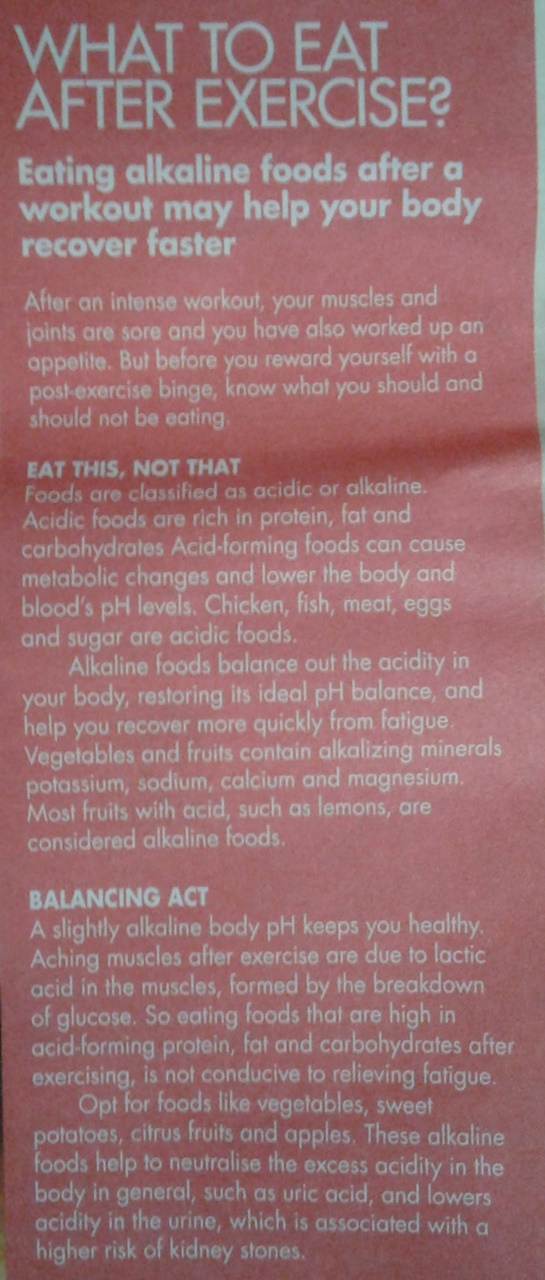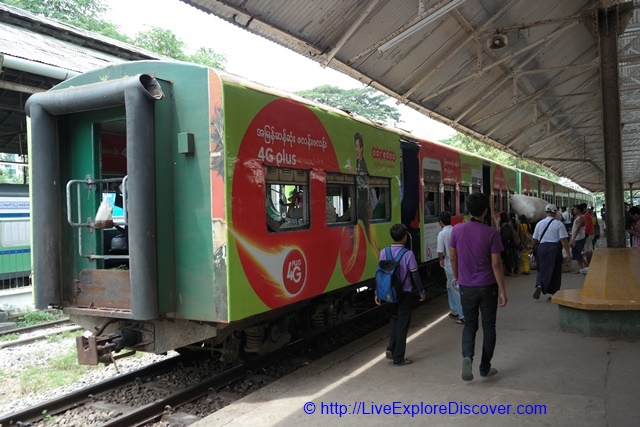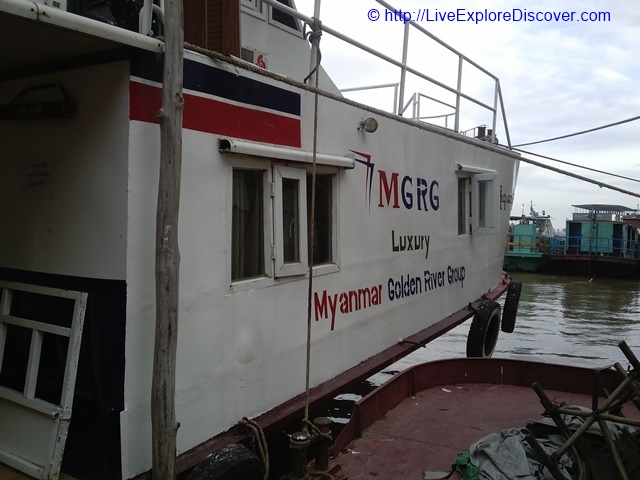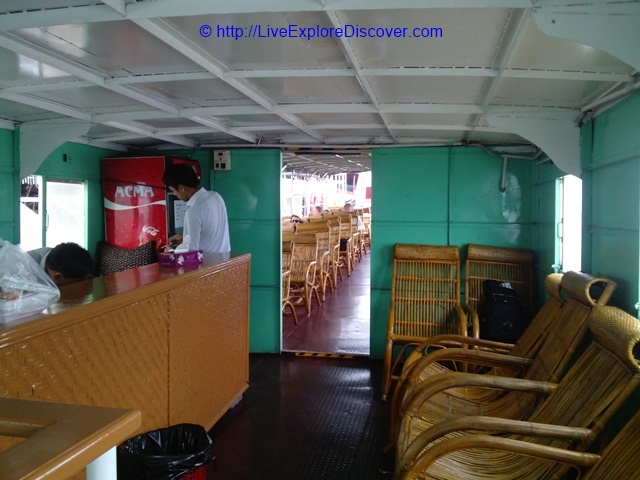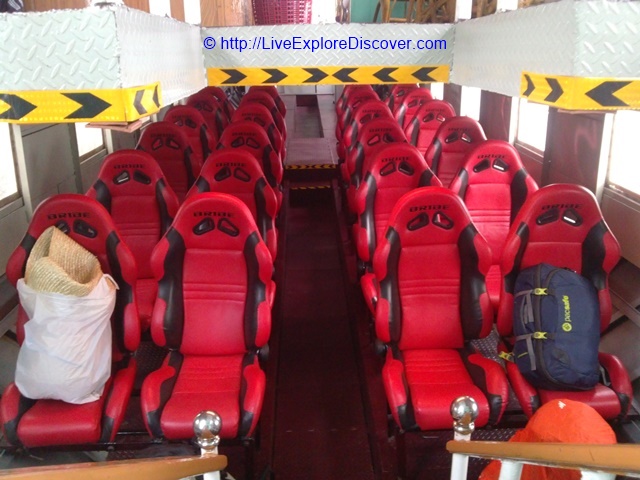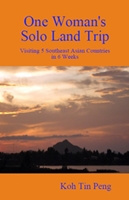Hope you have found the earlier article on ‘How to eat right for your three daily meals’ useful. Here is another article from Body SOS Carnival Guide 2018 that I would like to share.
Mar 07
Travelling around Myanmar: By train, boat, motorcycle taxi, coach, e-scooter and cycling
When exploring a new country, using different modes of transportation is sometimes a highlight of the journey itself. I would share my experiences of taking the train, motorcycle taxi, boat cruise, coach (bus), e-scooter and cycling in Myanmar.
From December 2016, Myanmar has become another country which Singaporeans can visit visa-free. So, it is one thing less to do before I can visit the country. A country filled with mysterious air which in recent years has opened up for economic development. Myanmar has in recent years been in high profile news with Ms Aung San Suu Kyi and the National League for Democracy (NLD) having a majority win in an election in 2015 and also the Rohingya crisis. The Rohingya crisis, which happened in the Rakhine state, was in the news when I visited Myanmar in September 2017. Although there was a crisis in the Rakhine state, the state is at the western coast of Myanmar and the other states were safe to visit when I was there.
Train in Yangon
I took the train twice, once at Yangon when I took the 3-hour Circular Line. The other time was when I went to Mandalay from Yangon.
On the circular train, you see villagers boarding the train with their wares. To board the Circular Train, you need to board it at the Yangon Train Station. The ticket cost just 200 kyat. (The exchange rate as of September 2017 was 1 SGD = 999 kyat.)
The 3-hour journey got boring after a while as the village scenery and villagers with their wares become common. If you are feeling hungry, you could buy some food like watermelon, cooked corn etc. If you feel bored and adventurous enough to explore, you could hop off the train at any station. You could always buy another ticket to board the train back to the station you start with. Or continue on to another destination by taxi.
I also took the train to Mandalay which I would share in another post soon.
Motorcycle taxis in Mandalay
To be honest, I didn’t really like the idea of riding a motorcycle taxi. It didn’t seem safe as if involved in an accident, you could get seriously injured than if you are in a car. Also, one has to be seated close to the driver.
The other time that I took a motorcycle taxi was in Hue, when I was unaware that the transportation being arranged for me to go on a river cruise was motorcycle and not a car. If you like to read more about my backpacking trip to Vietnam and other Southeast Asia countries, you can get a copy of my travelogue, ‘One Woman’s Solo Land Trip’.
In Mandalay, I took the motorcycle taxi as car taxis were not readily available on the road. We could not like in Singapore flag down a car taxi standing by the roadside. But if you do need a car taxi, you could ask your hotel reception to help you call for one. It was also much more expensive than motorcycle taxi. Since I was alone and on a budget trip, I decided to use the motorcycle taxi. For motorcycle taxi, you negotiated and agreed on the price for the journey before getting on the motorcycle.
Lesson learnt — it doesn’t pay to be too kind. I had a distaste of motorcycle taxis after my experience with a driver in Mandalay. In short, the driver was not honest. I had paid some fare in advance at the start of the journey as I was told he had no money and needed some money for food and petrol. This amount was to be deducted from the total fare at the end of the journey. But at the end of the journey, he didn’t acknowledged all the money I gave earlier and wanted some more money. I had not mind treating him to lunch knowing his financial difficulties, so it was not the amount of money but the attitude which made the experience unpleasant. The amount of money was small at US$1 so I didn’t want to make a big fuss of it and just paid him the additional money. However, that was the end of my experience with motorcycle taxis.
Boat cruise from Mandalay to Bagan
I took the boat cruise from Mandalay to Bagan with MGRG Express as from the internet, I read good reviews of this company for the cruise on the Irrawaddy River. The cruise lasted for about 9 hours from 7 am to 4 pm. Breakfast, lunch and drinks were provided. The cruise cost US42, which was much more expensive than if you choose to travel by coach.
Early in the morning when the sun was up, I found it hot on the deck so went down to the cabin as there was supposed to be air-con in the cabin. However, it was hotter in the cabin as the air-con didn’t seem to be working very well and there were also mosquitoes in the cabin. After some time, I went up to the deck when it was about time for lunch. It was actually much cooler on the deck if you seat at the centre or towards the back of the deck as you could get the wind when the cruise moves along the river. Earlier, I was seating nearer to the front and have much of the breeze being blocked.
After floating down the river for a while, it became boring and the hot weather made me sleepy. So, I entertained myself by taking photographs of the surroundings while we cruise along the river.
E-scooter in Bagan
In Bagan, to get around visiting the monuments, you need some form of transportation. E-scooters were readily available for rental here. I booked one at 7000 kyat for 1.5 days.
If you have no experiences with motorcycles or e-scooters, you do need some practise to get used to controling the speed of the e-scooter. The other problem I had with the e-scooter is that I had problems starting the battery. Sometimes, I just couldn’t make the vehicle start by turning the knob. Luckily, I had some help from my tour mates when we went on a (free) guided tour. I would write another post about my experience with the e-scooter so check out that post in the near future.
Coach to Inle Lake
Before the trip to Myanmar, I researched and read about the bus trip from Bagan to Inle Lake. Many wrote of the uncomfortable experience of enduring the winding mountain roads during the journey to Inle Lake and advised those who want to avoid this to take a flight instead. So, I was mentally prepared to stomach the experience. I also came prepared with motion sickness pills just in case.
I gauged my ability to endure the mountainous road journey based on a similar experience years ago. Several years ago, when I took a coach from Vietianne to Luang Prabang, Laos, it was also on mountainous roads. If you like to read more about my backpacking trip in Laos, you can get a copy of my travelogue, ‘One Woman’s Solo Land Trip’.
Both are developing countries, so their road conditions should be about the same, right? Oh, I was so wrong. The roads to Luang Prabang were paved roads but we are talking about gravel and mud roads with a lot of bumpiness and potholes for the roads to Inle Lake.
Do not like me underestimate the difficulty you would experience during this bus journey as the mountain roads section to Inle Lake took about 3 hours. During the journey to Luang Prabang, orange peels sufficed. But for this recent journey, I had to take some motion sickness pills.
Do also take note that there is no toilet on board on the coach and it was not often that the bus would make a stop. Even if you ask for a toilet stop, like I did during the journey to Inle Lake, it might be an hour or more before the bus can make a stop. Empty your bladder before you board the bus and don’t drink too much water during the journey. Also be prepared to bear with it for some time even if there is an urgency to use the toilet.
Cycling in Mandalay and Inle Lake
Isn’t cycling one of the best ways to explore a place, reduce carbon footprints as well as do some exercise? In Myanmar, I cycled twice, once in Mandalay and once at Inle Lake.
I cycled in Mandalay one afternoon. Mandalay is the second largest city in Myanmar. So, with the heavy and chaotic traffic, it was not ideal for cycling. I would suggest not to cycle here, especially if you are like me not a good cyclist. There weren’t much scenic scenery which made cycling worth the effort. The place which I could think of that might be worth the effort to cycle if you do want to try cycling would be along the stretch of road to Mandalay Hill. Cycling would also be much easier and faster as when I walked to Mandalay Hill from my hotel, the journey took 2 hours by foot to reach the base of Mandalay Hill. Of course, you could ask for a motorcycle taxi to take you to and up Mandalay Hill.
The other place I cycled was at Inle Lake. Many of the locals cycle here. It was suitable for cycling as traffic was light. I cycled when I wanted to visit the winery. Do check out the memorable cycling journey I had to visit the winery in a post in the near future.
Dec 07
10 Most Useful Things For a Backpacking Trip to Developing Countries
Packing for a trip is a difficult and time-consuming task. However, the tip to pack wise is to bring essential stuff which is suitable for the trip. Here are 10 most useful things for a backpacking trip to developing countries.
1. Eye mask and face mask
An eye mask for a good night sleep, especially if you stay in hostels or travel on trains and face mask to block out the fumes.
2. Bag hook
There are usually no hooks in the toilet cubicles. The floor is likely to be wet and dirty so you would not want to put your bag on the floor. You can place the hook on the door handle or the top of the door.
3. Wet tissue or hand sanitizer
Water might not be available so have wet tissue or hand sanitizer available when you need to clean your hands after using the loo or before a meal.
4. Insect repellent
This is especially so if you are going to rural places or going for hiking or trekking. Countries like some Southeast Asia countries have Aedes mosquitoes that spread dengue fever. Ades mosquitoes also spreads Zika virus. Malaria is also common in some of these Southeast Asia countries so you should get malaria pills from your doctor before visiting these countries.
5. Medications and first-aid pack
Pack a medicine bag with panadol, anti-diarrhoea pills and flu medication since it might be difficult to buy these or get those of similar quality in the destination. Also include a first-aid pack with plaster, cream for insect bites, balm for headache or stomach-ache. If you are on prescription medication, remember to put an additional set in your hand-carry bag in case your luggage gets lost.
6. A torch
Ever encountered a black out? Or you happened to be outside when night falls, like watching sunset, and before you know it, the sky has darkened?
For many of those who have a mobile phone with light, a torch might no longer be a necessity. However, I still prefer using a torch as you are not concern if you accidentally drop your torch onto the ground.
7. A mini-sewing kit
Just in cases the buttons on your clothes get loose, or you need to mend your bags. Include several safety pins which can be life savers for those emergencies when your clothes malfunction or your bag handle buckle.
8. Ziplock bags
It helps to keep your important items like passport and air-tickets dry. This is also useful when clearing immigration, when you need to show your toiletries in a clear 1-litre ziplock bag.
9. Poncho and umbrella
An umbrella is both useful for light rain and shine. A poncho is a saver when you encounter storms as it helps to keep yourself and your belongings dry.
10. An extra pair of footwear
An extra pair of shoes. You can opt for cloth shoes which are lighter and takes up less space. I ever encountered the situation when the soles of my shoes dropped off and my slippers broke (not on the same trip, luckily). The extra pair of footwear is also handy when your first pair is soaked in rain.
Nov 10
Retirement Planning: 5 Issues Retirees Face and Tips to Resolve them
Provident CEO Christopher Tan shared how to resolve the 5 common issues retirees face during their retirement. On one relaxed Saturday morning, I turned into FM98.5 radio station and learnt more about how we in Singapore can plan our retirement.
1. Long life
Living longer than the amount of savings we have is not a scenario we would like to be caught in. With modern advances, it is very possible that we would live much longer than our grandparents. According to the data at Singapore Statistics, people born in the 1970s are expected to live to around 65 years old while those born after 2010 are expected to live to 80 years old.
So the first concern is that we might live longer than the amount of money we have for our daily lives. Christopher advised that Singaporeans can use their CPF to buy CPF Life (CPF Lifelong Income For the Elderly). This is compulsory for Singapore Citizen and Permanent Resident born in 1958 or after and have a certain amount of CPF in their Retirement Account. This is because at 4% interest yearly, it is the highest that you can find in the market. However, there is always a con and in this case it is that there is a top-up limit to the amount of CPF Life one can buy.
2. Countering Inflation
The only way to counter inflation is to invest. With the CPF Life Plan, the interest rate is fixed. However, there is this new variable interest rate plan Accelerating Plan which will be available that allows us to beat the 2% inflation in Singapore. With this plan, the amount that you would receive yearly in the beginning will be lower than the CPF Life Plan. If you don’t want to take up this Accelerating Plan, the other option is to top up the CPF or to take up the annuity plan at an older age.
3. Investment Pitfalls
Christopher cautioned that you should know what you invest in, ie you should invest as if investing in a business. Christopher advised to put your money into 3 batches: (1) money for the next 5 year expenses, this is the money that you should not invest but put in the bank. Although this means you cannot beat inflation, the money is readily available if there is a need. The second batch of money is used to invest in safer products such as bonds. The third batch of money would be money you would not need for the next 10 years, and you should use this for investment. With the 10-year horizon in place, this is to ensure that short-term fluctuations in the market will not force you to sell off your investments at a loss.
4. Good medical insurance
Medishield Life is compulsory for all Singaporeans and PR for stay in B2 or C wards in government restructured hospitals. If this is alright for you, then there is no need for you to buy riders. Currently, there is a subsidy for the insurance yearly premium but the subsidy is only for the first 5 years.
5. Overspending
According to a survey conducted, retirees used a lot of money in the first 5 years after retirement. Some of the money would be used for expensive pursue such as travelling. There is a need to estimate the amount of money you can use yearly so that you do not overspend. Christopher reminded that one of the solutions is to portion the savings into three batches as suggested in Point 3.
Although I am still a long way from retirement, it is always not too early to plan for ones retirement.

